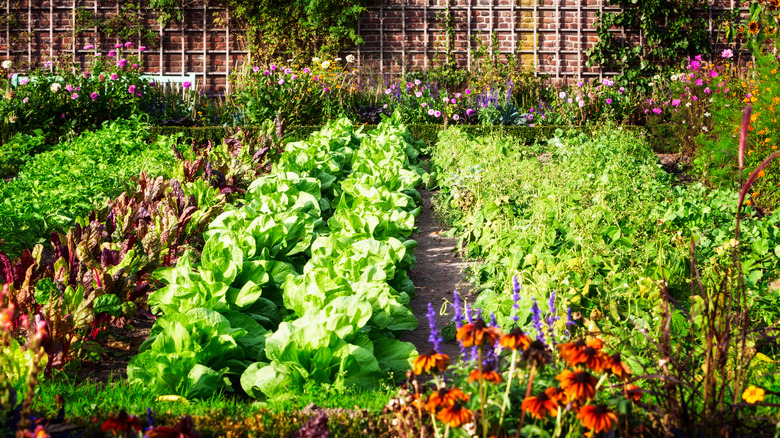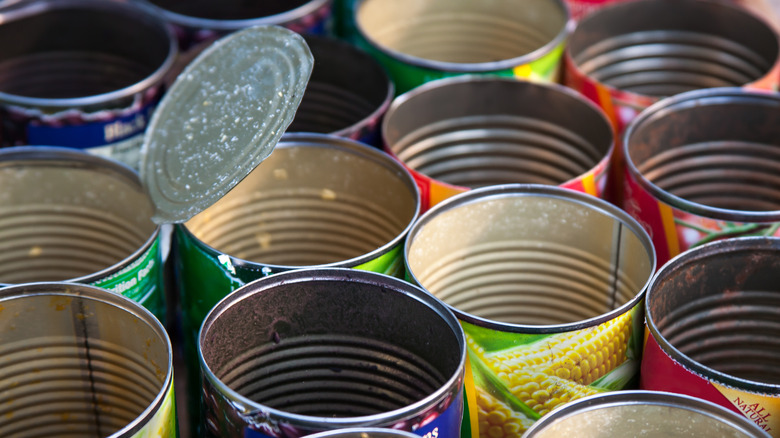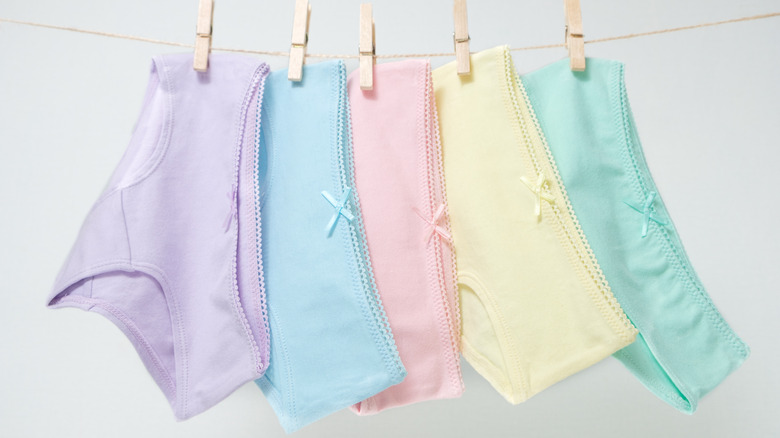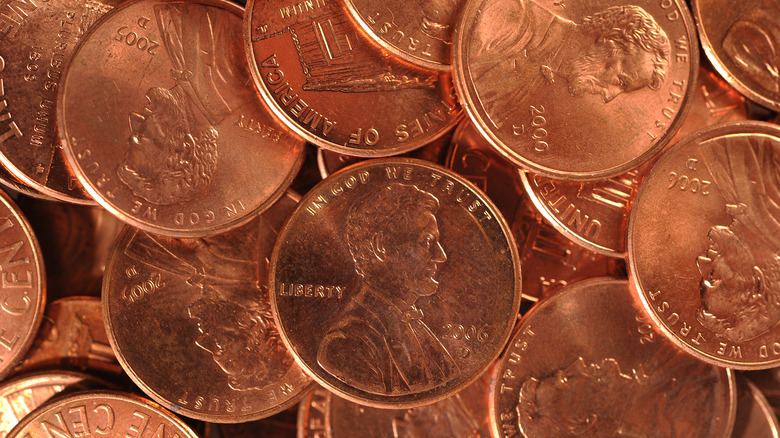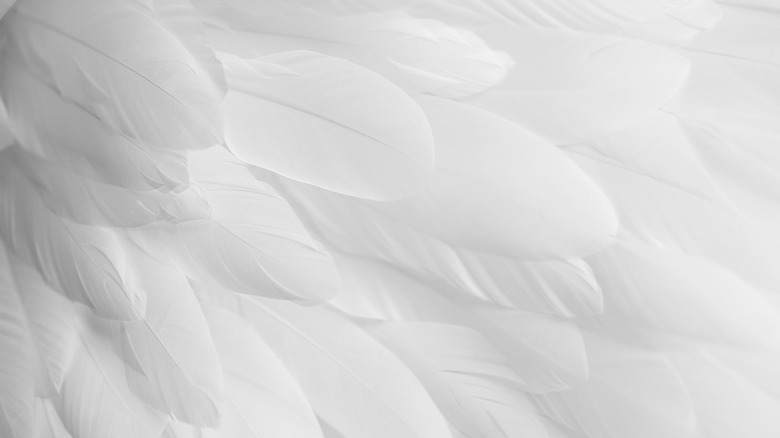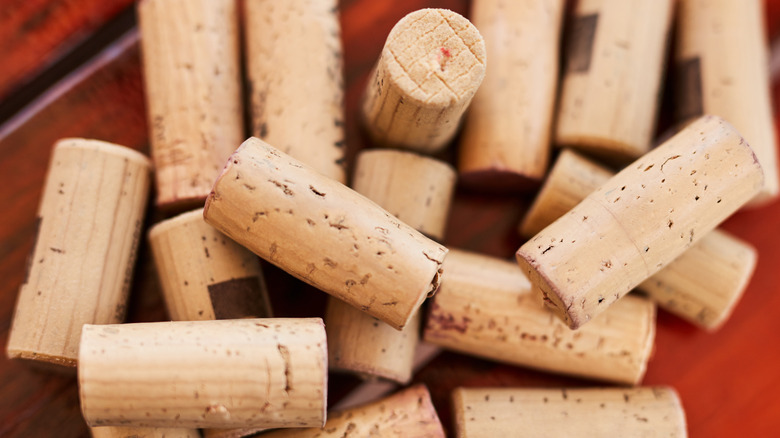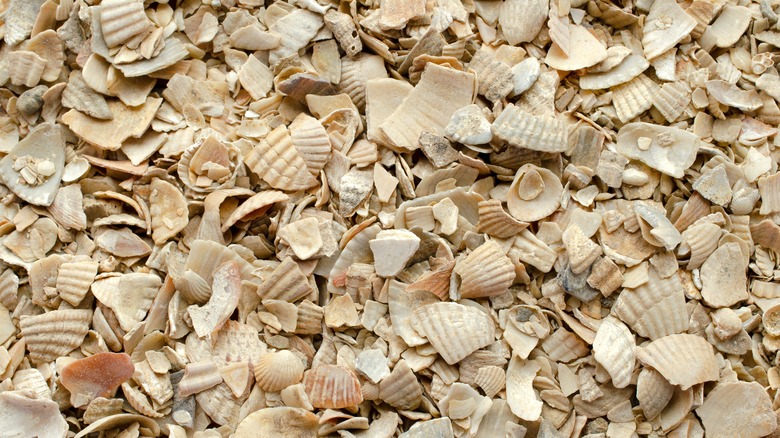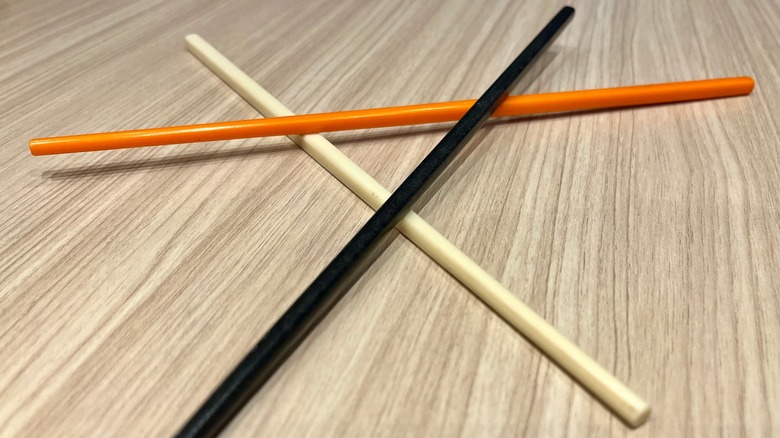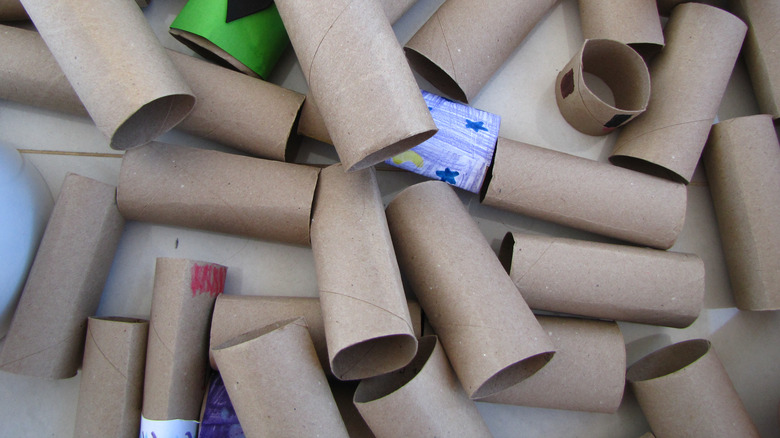Bury These Unexpected Items In Your Soil And Watch Your Garden Flourish
A healthy garden is able to produce more vibrant flowers with a stronger fragrance, as well as delicious fresh fruits and vegetables that are full of flavor. While traditional fertilizers have their place, adding certain food scraps, coffee grinds, and yard debris can increase nutrients to further enrich the soil. Surprisingly, there are a whole host of unexpected items that can also be buried within the soil that will contribute to the garden's ability to thrive.
Did you know burying a pair of cotton underwear is an excellent way to check the overall health of your soil? Tin cans can be used to protect against plant pests and toilet paper rolls do an excellent job of drawing earthworms to aerate and enrich the soil. Other items are useful for improving drainage or adding important antifungal properties within the garden soil to help prevent common diseases. Once you've unlocked these secrets, you'll be able to implement them and watch your garden flourish right before your very eyes.
Bury tin cans to protect plants from cutworms
Cutworms are caterpillars who enjoy feasting on the stems of young plants. These pests, which range in color and reach lengths of approximately 2 inches, can cause severe damage. Since the cutworms dine at night and hide in the soil during the day, you may not spot them. What you'll see instead is the damage they've caused. Once it's clear you have a cutworm problem, you'll need to take immediate action. There's no need to reach for an insecticide, as some old tin cans will work to create a natural barrier to protect the plants against the pests.
To take down cutworms in your garden using cans from your kitchen, you must first prepare the tin cans. Wash them out and then remove both the top and bottom ends using a can opener. Take the cans out to your garden and slide them over your seedlings and young plants. It's important to push the cans deep into the soil, as cutworms bury themselves in the ground after feeding. Leave just 1 inch of tin can above the surface of the soil.
Tip: If you do run into any cutworms during the installation of the tin cans, just pick them up and set them in a bowl full of soapy water.
Bury underwear to test your garden's soil
Are you unsure of the health of your garden soil? There's one weird gardening hack that you can implement that uses a pair of underwear to test the soil. Just one teaspoon of soil is made up of billions of microbes, points out the Pennsylvania Soil Health Coalition. In order for the soil to thrive, these tiny microbes need to feed on carbon. Turns out, your 100% cotton underwear contains carbon, which means it can be used as food for the microbes. When you bury cotton underwear in a healthy garden, it will be consumed by the microbes. Soil that is unhealthy won't contain as many microbes, so your underwear will be left virtually untouched.
Check that your underwear is 100% cotton and then bury it in your garden at a depth of 6 inches. Place a garden marker above the spot where you buried the panties, so that you won't forget where they are. Wait two months and then dig up the underwear. If barely any remnants of the underwear exist, your soil is healthy, and you don't need to do anything further. However, if the majority of the underwear remains, you'll need to amend the soil to improve its overall health.
Note: It doesn't matter if the underwear is brand new or an old pair you're about to toss anyway.
Bury pennies in the garden to better soil health
According to the University of Minnesota Extension, copper is a nutrient that plants need for everything from producing seeds to making chlorophyll. Copper also has antimicrobial and antifungal properties that can help plants remain healthy and free of disease. Since pennies are forged from copper, you'll want to bury pennies in your lawn to begin reaping the benefits. If you have any potted plants, you can use a few pennies in the potting soil as well.
Gather a bowl full of pennies and head out to your garden. Start burying three pennies in each hole you create around the plants in your backyard. You don't have to place them deep, as an inch or so is plenty. Three to four pennies can also be placed in potting soil, should you wish to provide your indoor plants with the copper benefits as well. It's important that you avoid using the pennies with plants that are listed as copper sensitive, such as geraniums, ivy, and bromeliads.
Bury matches for increased magnesium
Another nutrient that is important for healthy plant growth is magnesium. Magnesium does two important things. It is needed for photosynthesis to take place and it keeps the plant's metabolism working as it should. If you've performed a soil test and found out that your garden is lacking magnesium, you can actually bury matches to increase the soil's magnesium levels. Matches can release magnesium and other nutrients into the garden as they decompose, making them a cost-effective solution to a minor magnesium deficiency.
Grab a box of striker matches and head out to your garden. Begin burying the matches with the striking end going down into the soil. You can leave the tail end of the matches above ground. It's important to note that you don't want to place the matches up against the plant. If you're planting seedlings in a pot, you can drop a few whole matches at the bottom of the potting soil. Another option is to create a homemade magnesium tea by setting the matches in a pitcher of water. After a few hours, you can use the magnesium tea to feed the soil surrounding your plants.
Bury bird feathers for added phosphorus
Next to nitrogen and potassium, phosphorus is one of the most important plant nutrients. In fact, IFA reveals that phosphorus is vital to every living cell and necessary for cell division, storing energy, and completing photosynthesis. One way to naturally add phosphorus to your garden soil is to bury bird feathers. These feathers release phosphorus as they decompose, enriching the soil so your plants can thrive.
Gather fallen bird feathers from your chicken coop or pluck the feathers from a bird that has recently passed away. Removing the feathers is easier if you first give the bird a bath in hot water. Once you have the feathers, you can begin burying them throughout the garden. You can do this by hand, or you can till them into the ground before planting. Before tilling, however, you'll want to wet the feathers so that they are heavy enough not to take flight during the process.
Bury wine corks to improve airflow
In addition to introducing essential nutrients to the soil, it's vital that the soil isn't compacted and that it allows for proper airflow. One way to achieve this is to bury wine corks around the garden. Wine corks are constructed from a thick oak tree bark, so they are an excellent natural material to use in a garden setting. They will decompose easily, while offering a host of benefits, such as moisture retention, increased organic matter, and of course, improved airflow.
To implement this cork hack and aerate the soil within your garden, simply toss the wine corks around the garden and then go back and work them down into the top few inches of soil. Another option is to compost the corks and then work the compost into the soil. When composting, you'll need to cut the corks up into smaller pieces and place them in the layer of "brown" materials. Have indoor planters? Use the leftover wine corks instead of rocks to improve drainage at the bottom of the pot.
Warning: Never place corks that have been treated into your garden soil, as the chemicals will leech into the ground.
Bury crushed seashells for added calcium
Calcium is essential for a healthy garden. This important nutrient provides structure for cell walls, enables the plant to take in nitrogen, sodium, and potassium, and assists in the division of cells. If your garden soil is lacking calcium, you can bury crushed seashells, as they release calcium as they decompose. Seashells are also a great choice when used around certain produce, like tomatoes, as they help prevent fungal disease like blossom end rot.
Collect a bucket of seashells and then transfer them to a pot of boiling water. Boiling the seashells for 20 minutes is the best way to rid them of any harmful salt or bacteria that could be transferred to your soil. After the seashells have dried, set them in a bag and crush them with a hammer or rubber mallet. Work the crushed seashells into the soil surrounding your plants. Outdoor Life suggests burying the seashells deep into the soil when working with bushes and fruit trees. You can also toss a handful of crushed shells into your planting holes.
Bury chopsticks to protect flower beds from visiting animals
Whether you have dogs, outdoor cats, or visiting strays, you'll need to protect your flower beds from animals. Dogs like to dig up plants, while cats may use them as a private litter box. You can apply repellents; however, these often distract from the natural sweet scent of your spring blooms. Repellents also need to be reapplied often to remain effective. Instead, you can bury chopsticks in the garden to deter the animals from sniffing around and causing any damage.
To protect your flower beds, press chopsticks down into the ground, so that half of the sticks are buried, and half are poking up above the soil. Place the chopsticks around the perimeter of your garden, making sure to have a chopstick every couple of inches. If you don't have any chopsticks, Farmers' Almanac recommends using disposable plastic forks instead. Dogs and cats will avoid the area, as they won't want to get poked by the sticks.
Bury toilet paper rolls to attract earthworms
If there's one thing every household uses, it's toilet paper. Saving all of your cardboard rolls once the toilet paper has run out won't cost you a dime, and it will produce a host of benefits for your garden. This is because when you bury the toilet paper rolls, you're creating an enticing habitat for earthworms. These tiny creatures use cardboard rolls for both shelter and food. Gardens benefit from the earthworms' ability to aerate and enrich the soil, which helps plant roots remain healthy.
To start burying your toilet paper cardboard tubes to help your garden thrive, you simply dig up enough dirt to fit the tubes. Place the tubes in the soil and cover it back up with the dirt you previously removed. Within three months, the earthworms will have gobbled up the cardboard and converted the soil into prime planting material. Simply garden as you normally would.
Tip: You can also add toilet paper rolls to your compost pile as part of the "browns" layer.
